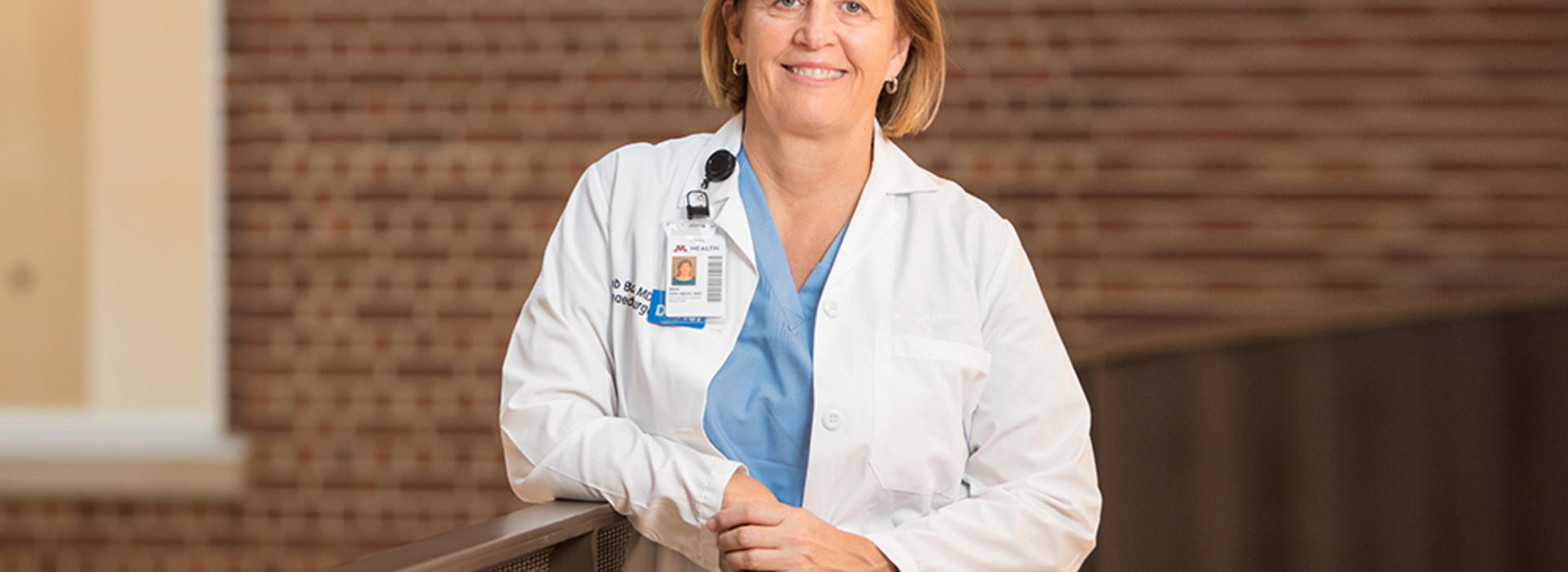
Dr. Ann Van Heest is Devoted to Helping Children Achieve Their Potential Through Clinical Care, Research and Physician Training
Ann Van Heest, MD, has three pillars to her work: education of future orthopedic surgeons, treatment of children with hand and upper extremity disorders and clinical research. That trio makes academic medicine the right place for her to make a big difference in healthcare.
A professor of orthopedic surgery at the University of Minnesota Medical School, Van Heest serves as vice-chair of education for the Department of Orthopedic Surgery and has been residency program director for orthopedic surgery for 16 years. As graduate medical education underwent huge shifts in the last decade, Van Heest helped determine more effective ways to train orthopedic surgery residents both on the local and national levels. She also chairs the graduate medical education committee for the American Board of Orthopedic Surgery and serves on its board of directors.
American residency training previously had been hierarchical with arduous hours and apprentice-style learning with little oversight. A more modern approach used now engages residents in competency-style training. It includes fresh approaches to curricula with more surgical simulation training and includes assessments of surgical skills. Nationally, monitoring of work-hour with improved focus on resident well-being has developed.
“I have been working to try to help improve the educational environment, to improve diversity in orthopedic surgery and to transform from the apprenticeship model to the competency model,” Van Heest says. “We are advancing competency-based medicine. This is going to be transformative for surgical education across the country.”
Sharing Her Practice With the Twin Cities
A graduate of the University’s Medical School, Van Heest also did her orthopedic surgery residency at the University. She then completed a fellowship in hand and upper extremity surgery with a pediatric hand surgery focus at Brigham and Women’s Hospital/Children’s Hospital in Boston. She is driven to help children with a variety of issues maximize their full potential after surgery.
Van Heest practices across the Twin Cities, including at Gillette Children’s Specialty Healthcare, Shriner’s Clinic for Children and the University of Minnesota Masonic Children’s Hospital. She focuses on neuromuscular disorders, such as cerebral palsy and spinal cord injury, birth brachial plexus injuries and many congenital hand differences.
“I love working with kids to help them achieve greater function,” she says. “My University appointment has allowed me to go to multiple children’s hospitals in the Twin Cities and provide pediatric upper extremity specialty care. This allows me to provide a very sub-specialized type of medicine, which is why I love what I do.”
Training for 2050
Van Heest believes the University of Minnesota’s orthopedic surgery residency program stands out because it’s the only training program in town, unlike programs in other major cities; orthopedic surgery residents can rotate at many area hospital networks. That means, residents have the opportunity to learn at multiple, diverse locations in the Twin Cities, from Gillette and the Minneapolis Veterans Affairs Medical Center and TRIA Orthopaedic Center.
That comprehensive training is integral both for the individual and the region. “We’re training future orthopedic surgeons for 2050,” Van Heest says. “We are trying to impact medical care not just for the patients we provide care for here at the University, but really for the Upper Midwest and for future generations.”